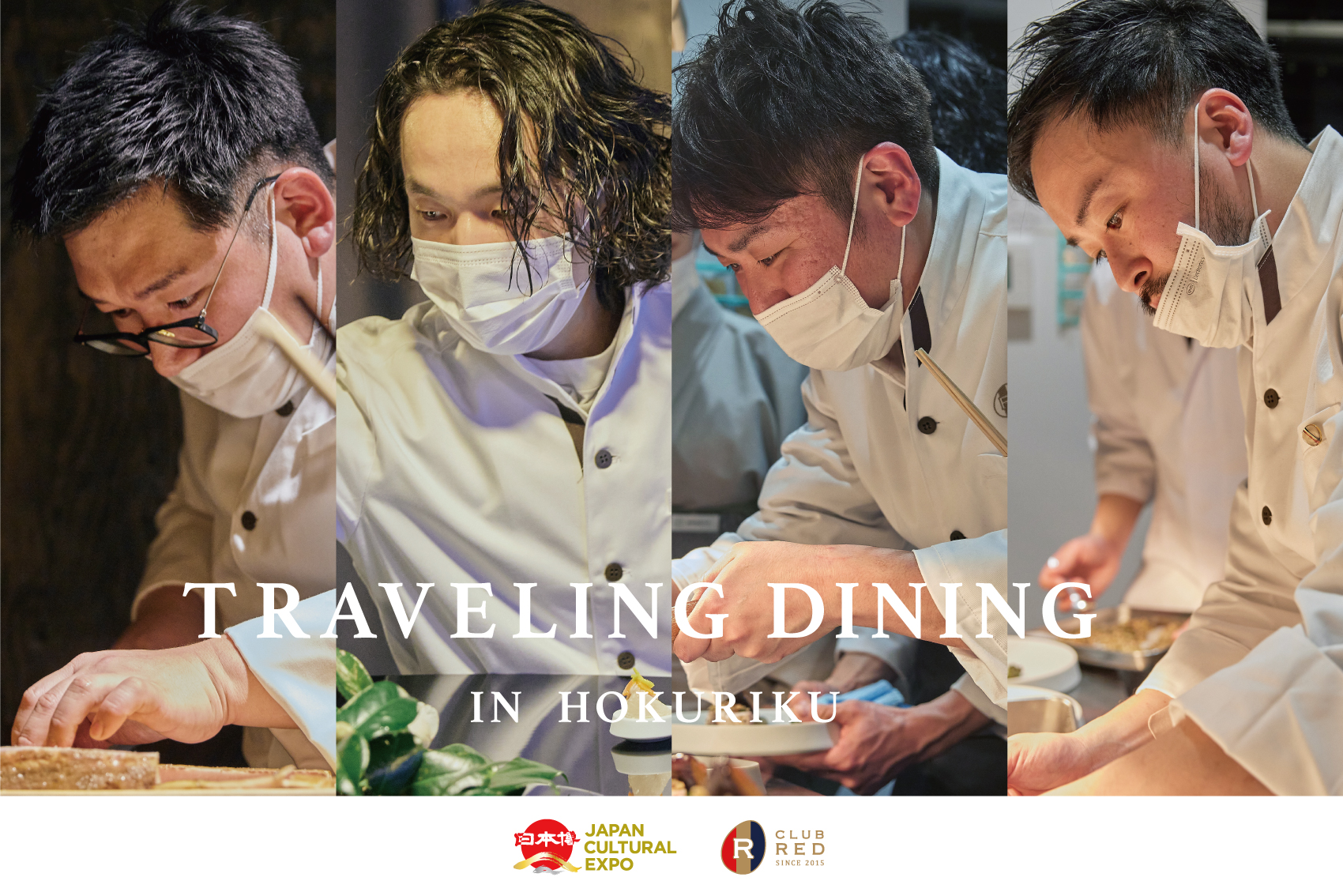
Four elite chefs with ties to Hokuriku recreate local cuisine
The “Japan Cultural Expo x CLUB RED: Traveling Japan by Dining in Hokuriku” dining event was held at Kenrokuen Teahouse Kenjotei in Kanazawa, Ishikawa Prefecture, on Saturday, January 21 and Sunday, January 22, 2022.
The aim of the Japan Cultural Expo x CLUB RED project is to rediscover the appeal of local cuisine, which conveys the culinary culture of the region, for the next generation as well as for people overseas. This year’s event was a follow-up to the one held in Tohoku in 2020 (which was partially cancelled due to COVID-19 measures).
At these events, Japanese cuisine is offered as a form of “beauty” in the same space as crafts and historical buildings so that people can not only taste the food but also recognize it as a part of the culture.
The theme of “Japan Cultural Expo x CLUB RED: Traveling Japan by Dining in Hokuriku” is the cuisine of Ishikawa, Toyama, and Fukui Prefectures in Japan’s Hokuriku region. While they share a common thread of the use of fermentation, each has its own individuality according to the traditions and culture rooted in each land.
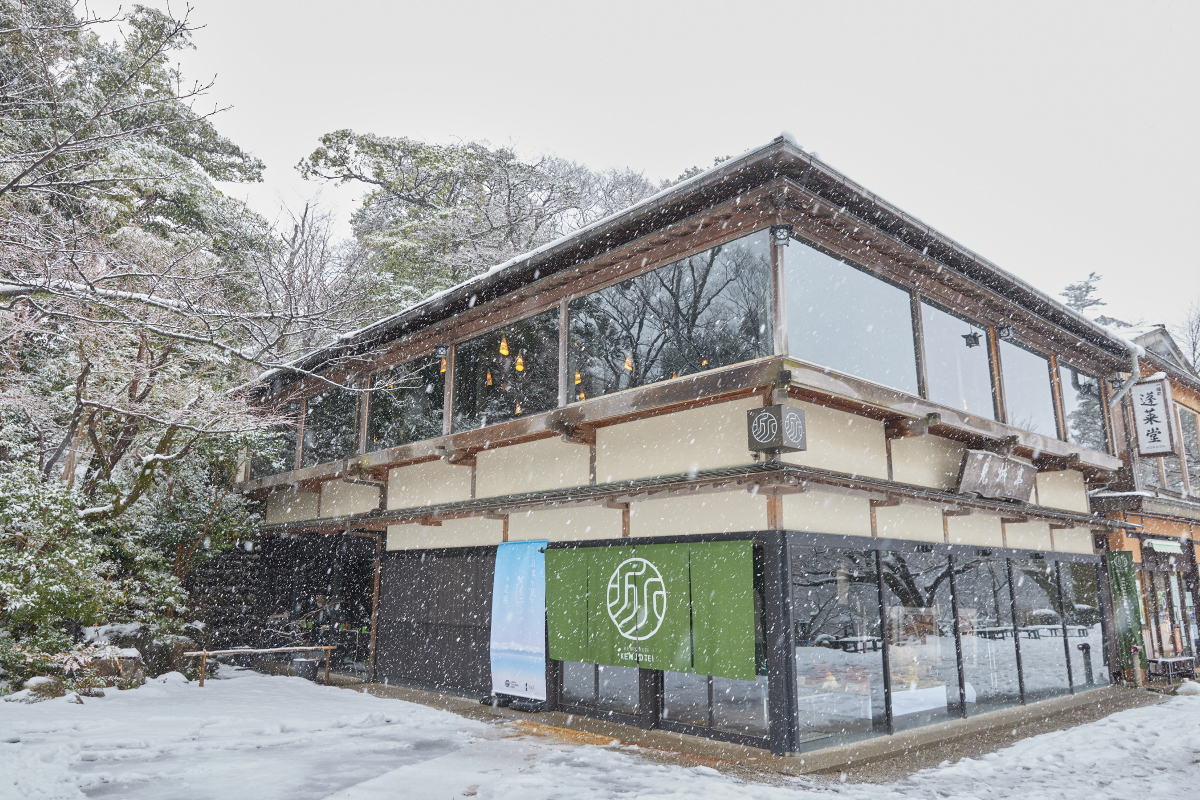
Four young chefs from CLUB RED with ties to Hokuriku learned about and experienced the food, culture, and climate of each area during the year-long “Hokuriku Labo”. Utilizing the knowledge they gained from this experience, they created a new generation of local cuisine inspired by Aenokoto, an ancient farm village event in the Noto area, and served it as a multi-course meal at the event.
*CLUB RED is a creative laboratory for cuisine made up of a community of young chefs who have excelled in previous RED U-35 competitions, as well as judges from previous years.
[Participating Chefs]
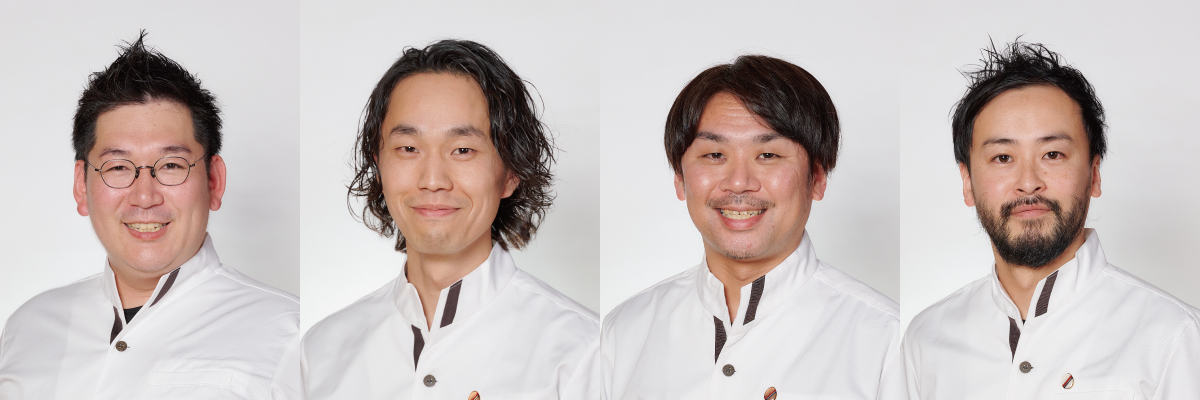
Tohru Kawashima (2018 GOLD EGG, Japanese Cuisine)
Born in 1984 in Ishikawa Prefecture. Owner and chef of Ipponsugi Kawashima (Nanao City, Ishikawa Prefecture). Entered a cooking school after graduating from junior college. After graduation, honed his skills at Japanese restaurants in Osaka and Kyoto, where he served as head chef.
Toshiharu Sunayama (2017 BRONZE EGG, French Cuisine)
Born in London in 1987 and raised in Saitama Prefecture. Chef at Les Tonnelles (Kanazawa City, Ishikawa Prefecture). *Freelance since February 2022. After working at a restaurant in Tokyo, moved to Europe in 2010. Became a sous chef in 2015, working at La Grenouillère for several months before returning to Japan.
Yuta Hamada (2018 BRONZE EGG, Japanese Cuisine)
Born in 1984 and raised in Toyama Prefecture. Head chef at Hamadaya Uozu Ekimae Branch Hamadaya LABO(Toyama).
The youngest person in Japan to be awarded the Medal of Honor for Sake Tasting. Preparing to open a new restaurant in fall 2022.
Meiju Hirata (2017 SILVER EGG, Italian Cuisine)
Born in Tokyo in 1986. After training at an Italian restaurant in Tokyo, moved to Nanao City, Ishikawa Prefecture in 2016. Owner and chef of Villa della pace (Nanao City, Ishikawa Prefecture), an auberge restaurant with accommodation facilities.
A special two-day dining experience among the snowy scenery of Kenrokuen Garden in Kanazawa
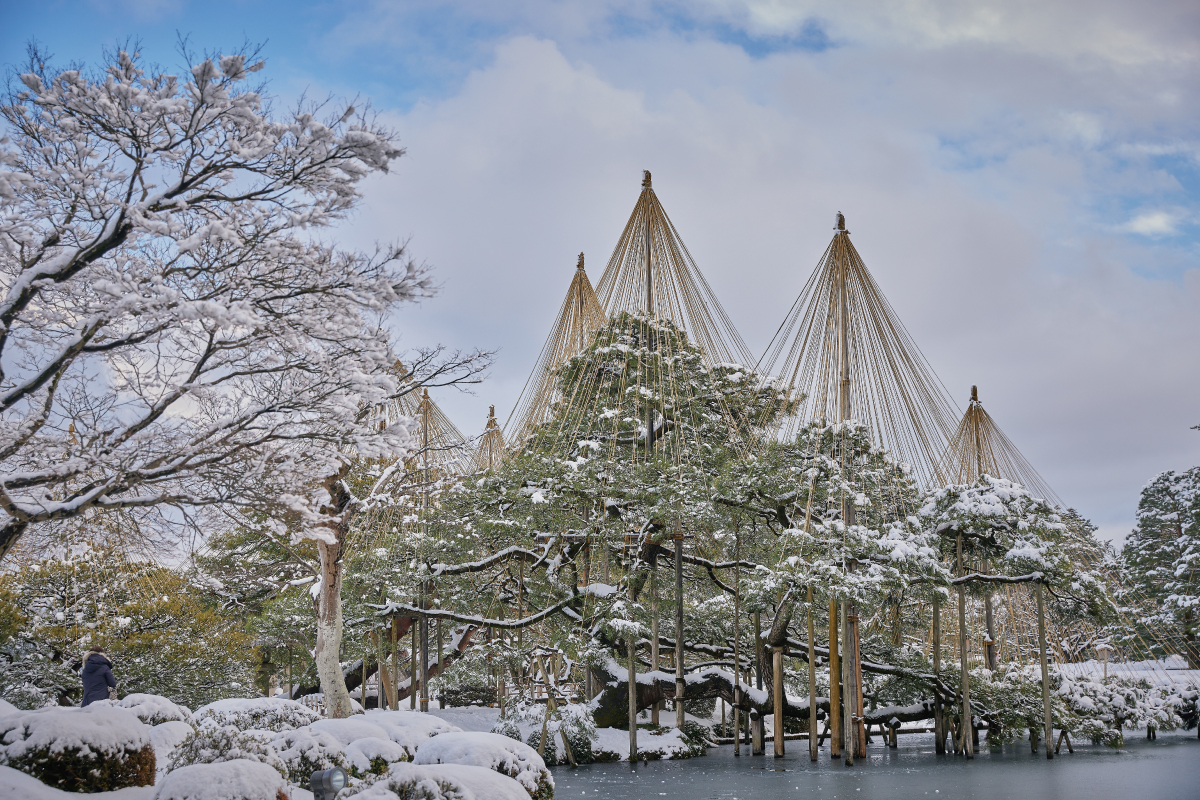
In Kanazawa, it started snowing in the early afternoon of the first day, instantly turning the city into a world of shimmering white. Outside the window of the Kenrokuen Tea House Kenjotei, the venue for the event, the snow-covered Kanazawa Castle looked majestic, and snow was piling up on the snow hangings, a common sight during winters in the Hokuriku region.
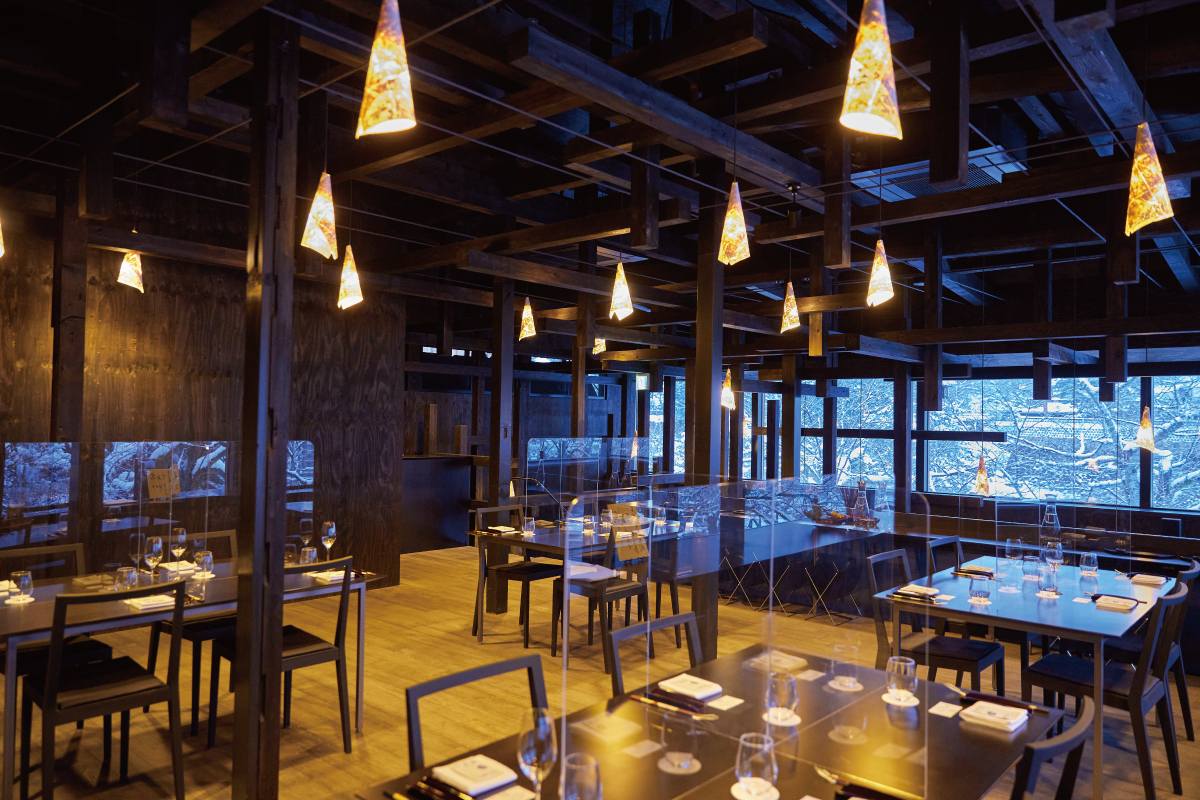
Kenjotei was renovated in 2019 by world-renowned architect Kengo Kuma. Its interior is a modern design space that combines tradition and cutting-edge technology.
The first floor served as a space where you could “see” and experience Hokuriku culture, the theme of the event, before dining. A model of a dish from Aenokoto, lacquerware, glass, Kanazawa gold leaf and other crafts were on display, and a video summarizing the activities of Hokuriku Labo was also being shown.
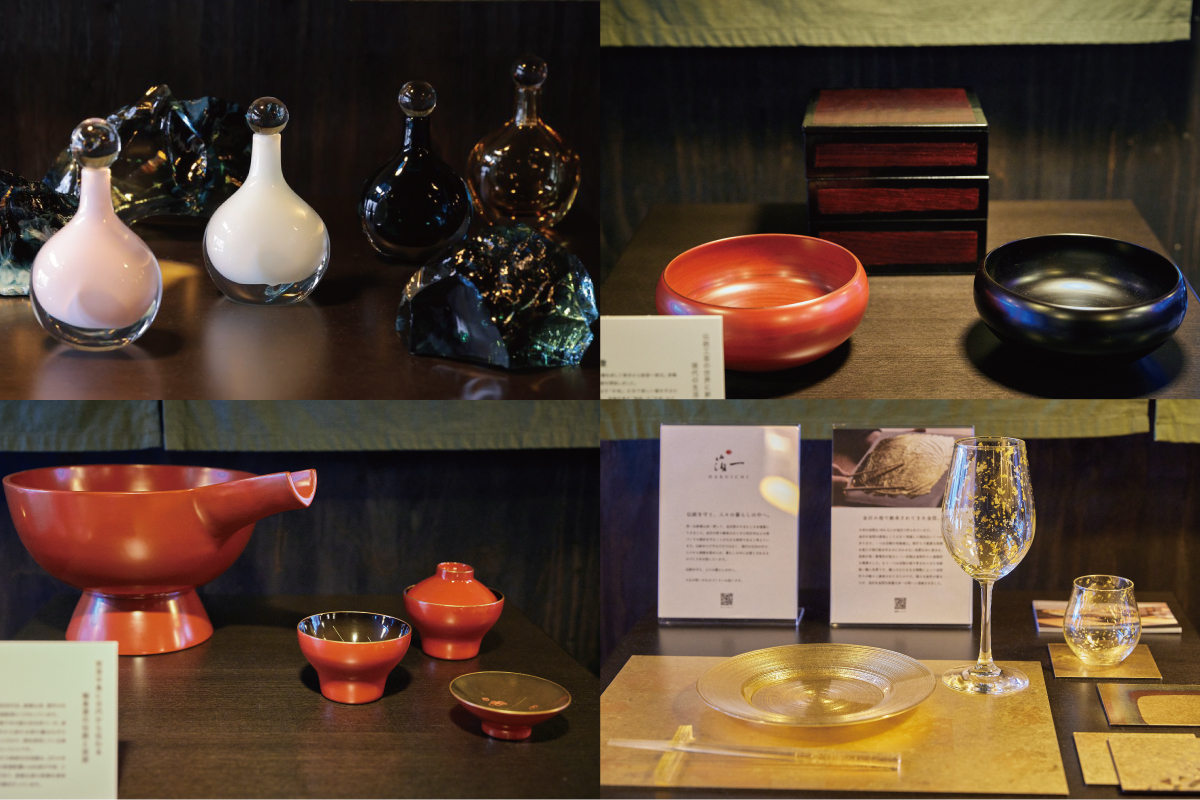
Upon their arrival at the venue, the guests were taken to the first floor counter, where the welcome menu awaited them.
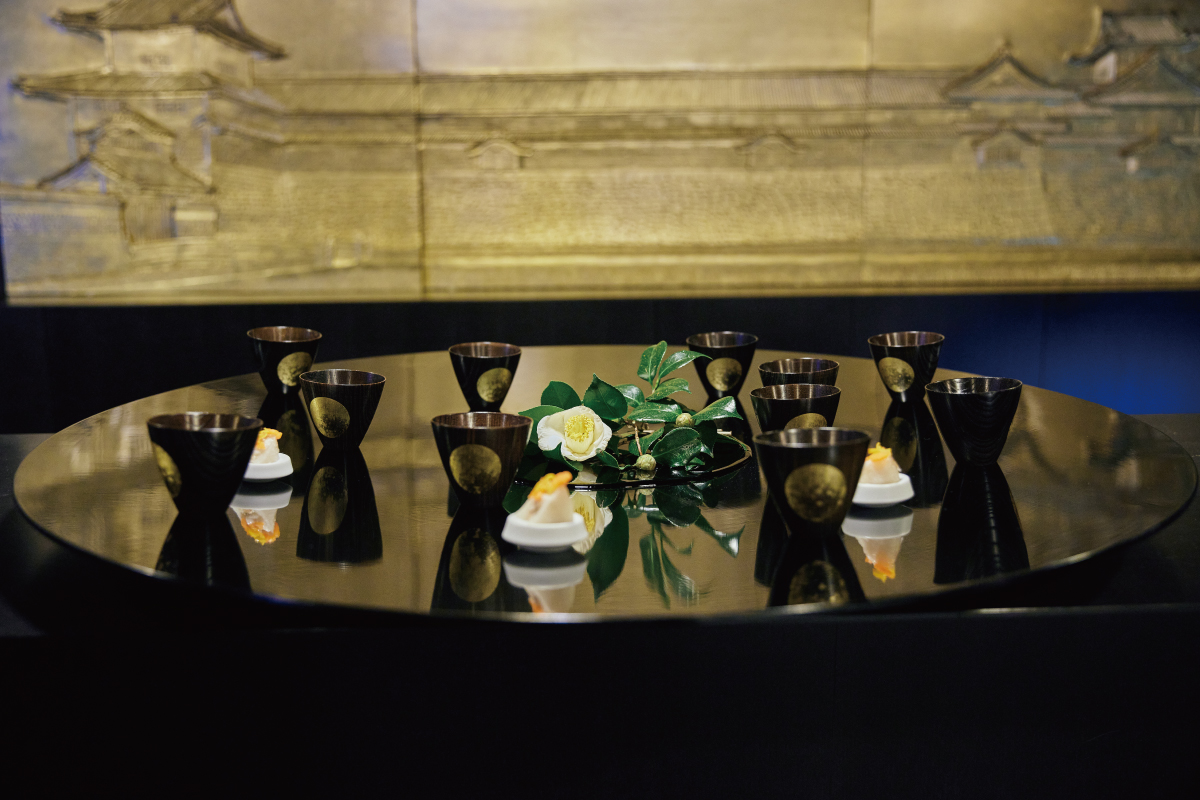
On the counter, amuse-bouche was beautifully arranged on a massive lacquer plate more than one meter in diameter, made by the traditional Wajima lacquerware shop Osaki Lacquerware, and the white camellia arranged in the center added a lovely seasonal touch. After receiving their amuse-bouche from chefs Sunayama and Hamada, the guests took pictures, tasted the food and drinks paired with it, and viewed the exhibition until the start of the event.
Aenokoto Talk Show: A Discussion of Hokuriku Culture
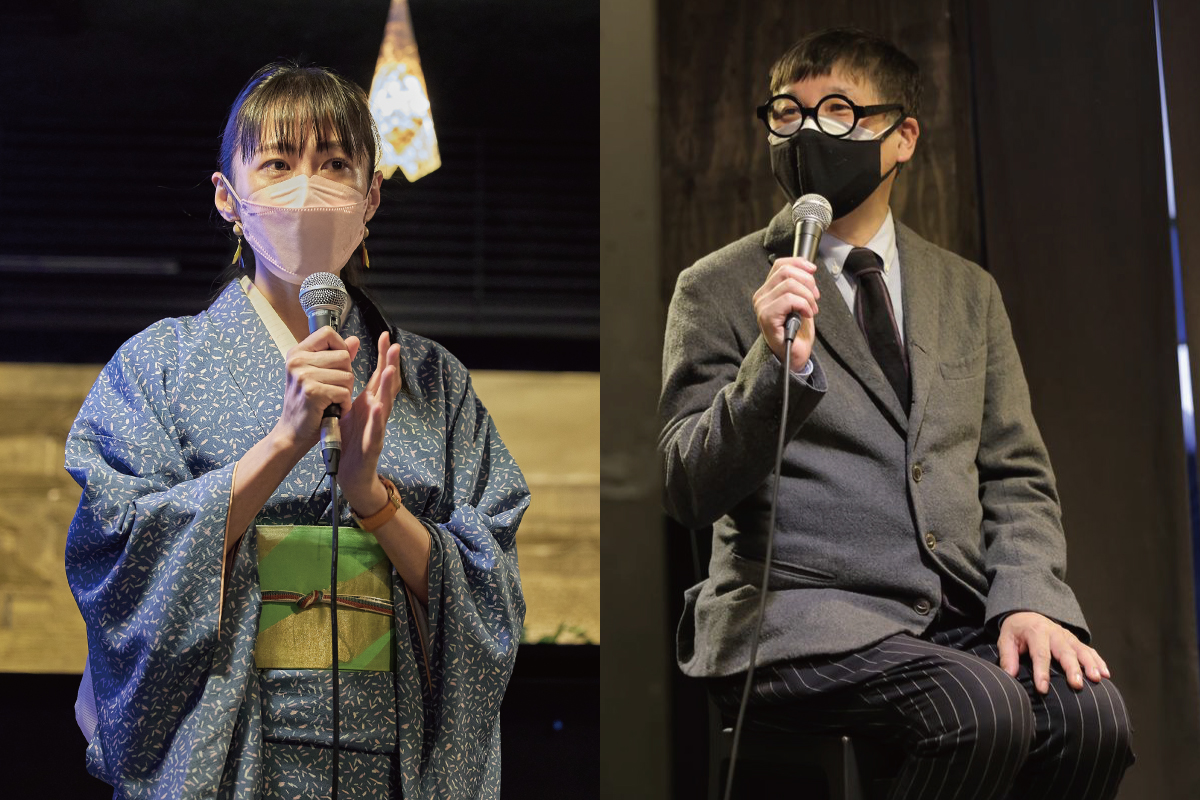
After the declaration of the start of the event, a talk show on the topic of Aenokoto was held. The first day was led by Asuka Nagasaka, a food analyst and researcher of restaurant culture who eats at about 600 restaurants a year, mainly in the Kanazawa area. On the second day, Akito Akagi, an editor turned Wajima lacquerware artist who lives in Wajima, discussed Aenokoto.
[Talk Show: About Aenokoto] (Summary)
This multi-course meal was born from the chefs’ experience of Aenokoto in the Okunoto area, guided by Ms. Nagasaka, who is also a Noto-Wajima food ambassador.
Aenokoto is a typical folk event in Okunoto, where people pray to and give thanks to the deities of the rice fields. It takes place twice a year, on December 5 and again on February 9. Aenokoto is made up of the words “Ae”, which means “hospitality”, and “koto”, which means “rituals and festivities”.
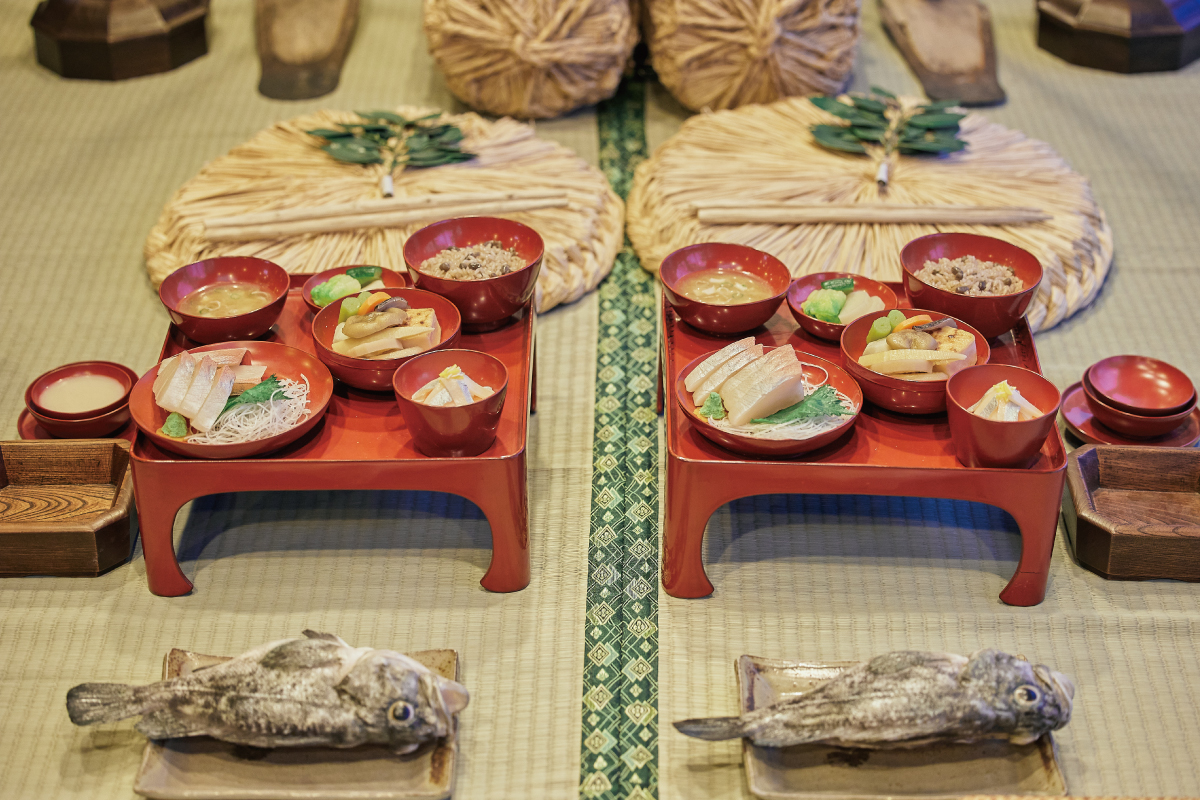
The head of the farm family goes to his rice field to welcome the deities and guide them to his home, calling out to them along the way as if they were right beside him. It is said that this is because the deities of rice fields are blind. They then serve a feast as a reception for the deities.
The deities of the rice fields are a husband and wife, and all the dishes for Aenokoto are prepared in sets of two. In the alcove of the house, an altar is made by placing a two-pronged daikon radish and a pair of chestnut wood chopsticks on each tray. The chopsticks are 1 shaku and 2 sun (approx. 36cm) in length, which symbolizes the 12 months of the year. The chestnut tree is said to bear fruit, thus using chestnut wood symbolizes hopes for good harvests.
Each of the foods also has its own meaning. Sekihan (red beans and rice) is considered bad luck as it reminds people of insects because it is steamed (the Japanese word for both insects and steaming is mushi), so white rice or rice mixed with boiled red beans is served. Natto (fermented soybean) soup to symbolize “sticking to your work”. Grilled tofu, normally a staple of simmered dishes, is avoided as its appearance resembles scorched rice fields. Rockfish (mebaru in Japanese) is served whole. It is also served raw, without cooking, to signify crops sprouting (“to sprout” is “me ga haru” in Japanese, a play on words of the fish name mebaru).
Amazake is used as the sake offered to the deities of the rice fields, as they are said to love sweet things. Ohagi, a confection made with glutinous rice and sweet bean paste, is also served in abundance.
This is how families celebrate the new year alongside the deities, and on February 9th, another feast is held as a send-off for the deities when they return to the fields.
Today, with the development of agricultural technology, a wide variety of foods are available. However, in olden times, a failed rice harvest was a life-threatening situation, so these Aenokoto meals were prepared as prayers for successful harvests. The chefs were inspired by this Aenokoto in their preparation of today’s multi-course meal, which is something I’d like you to keep in mind as you eat.
On to the Main Event: Time to Enjoy a Hokuriku Multi-Course Meal
Once the guests were seated in the main hall for the dining event, it was time to start the meal. The chopsticks set on the table were original works by the Osaki Lacquerware and Hakuichi, custom-made for this occasion, and were also a memento for the guests.
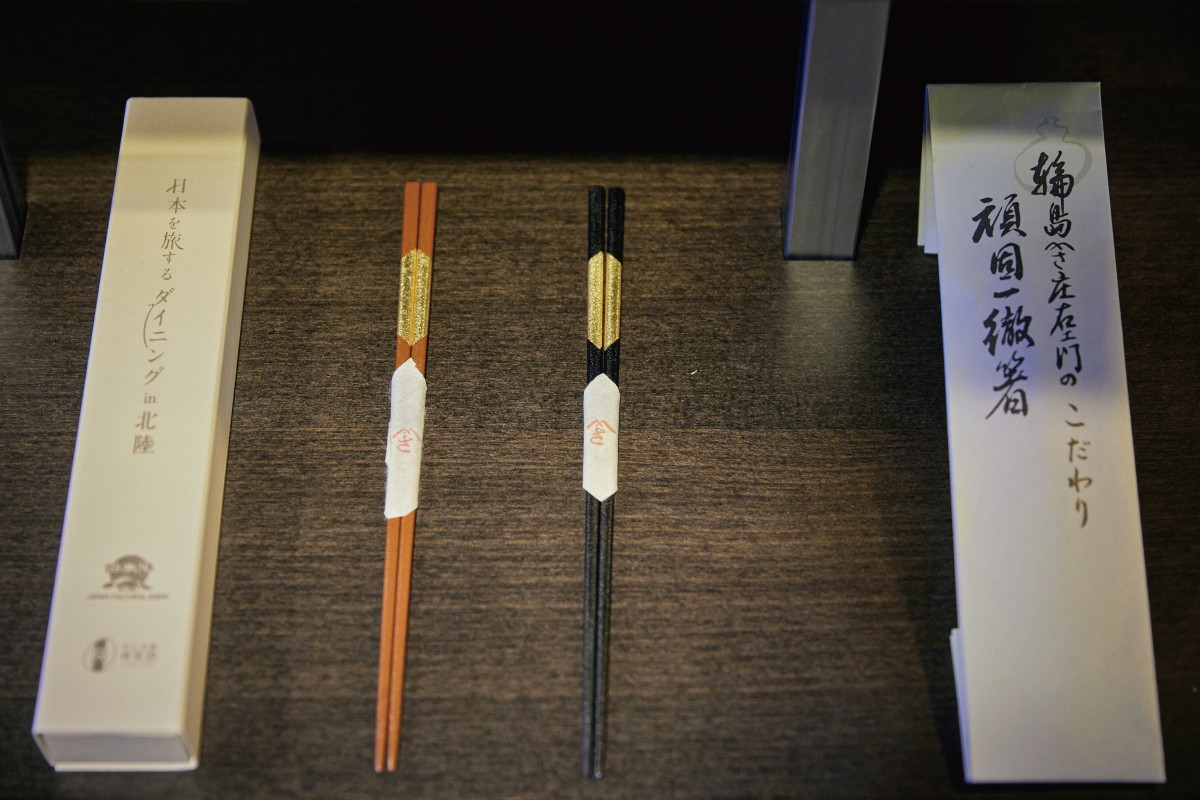
As a precursor to the food, the sommeliers went around offering pairing drinks. The first dish, an assortment of appetizers served on a white plate by Kutani ware artist Kiseko Morioka, was then placed on the table. The eight items, arranged to resemble the winter scenery of the Hokuriku region, take you on a journey around Ishikawa Prefecture on the plate, starting at Noto. It was a fitting opening to the event, with creations by each of the four chefs on the same plate.
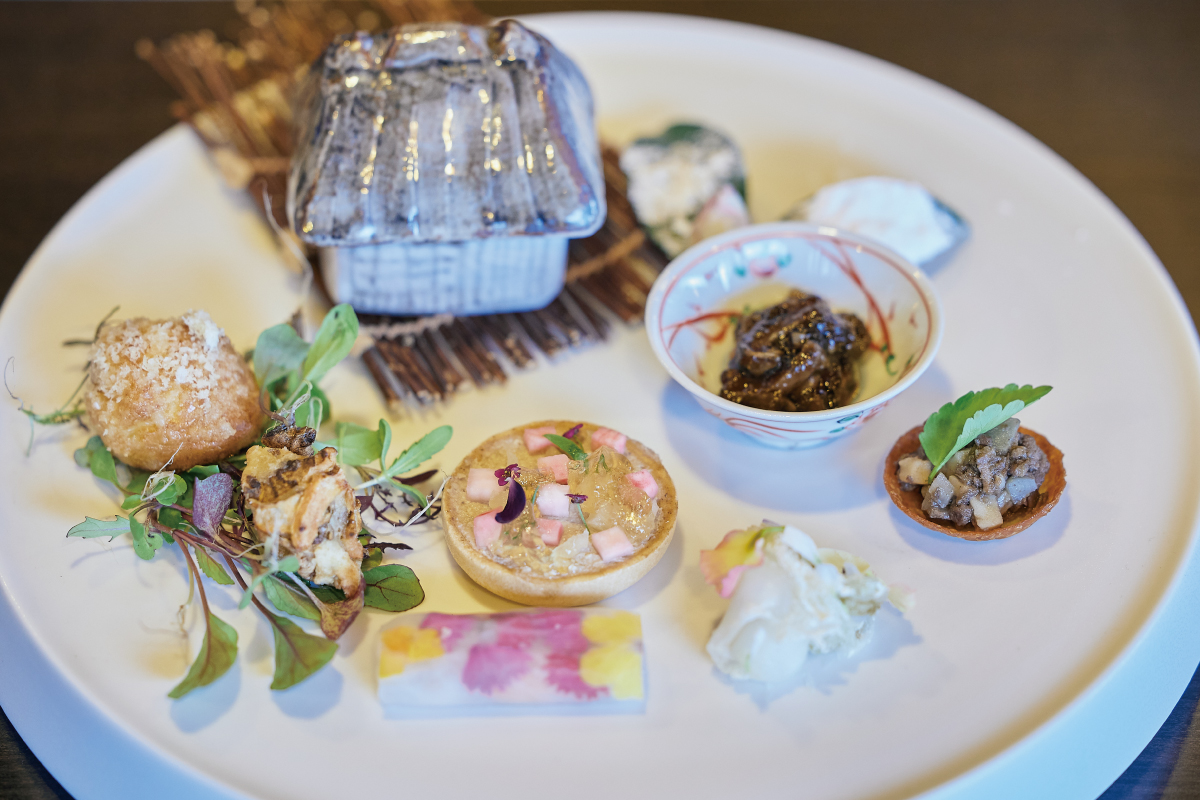
While the guests listened to the description of the food, they took their time looking it over, and before they knew it, they picked up their chopsticks and started eating. Some savored each dish carefully, while others examined it against the menu, and they spoke quietly among each other about their impressions of the food.
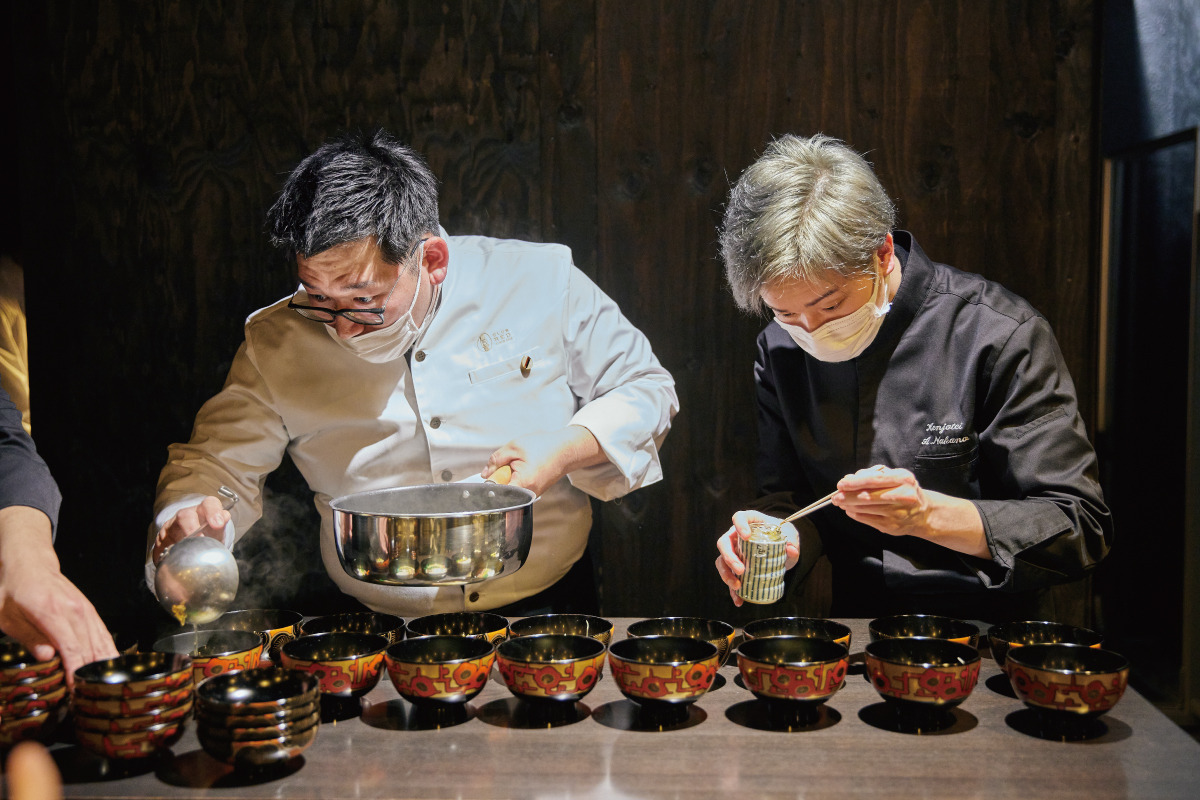
In the midst of all this, the table on the stage in front of the audience was lit up and Chef Kawashima began preparing the soup. He placed the ingredients in lacquer bowls adorned with plum blossoms to match the season, and then poured in hot broth. The aroma of the fragrant broth filled the floor, and the anticipation built as the bowls were served one after another. The fish was meant to be tilefish, but due to availability issues, it was substituted with longtooth grouper. Even so, this showed that the availability of high-quality ingredients is proof of the richness of Hokuriku cuisine.
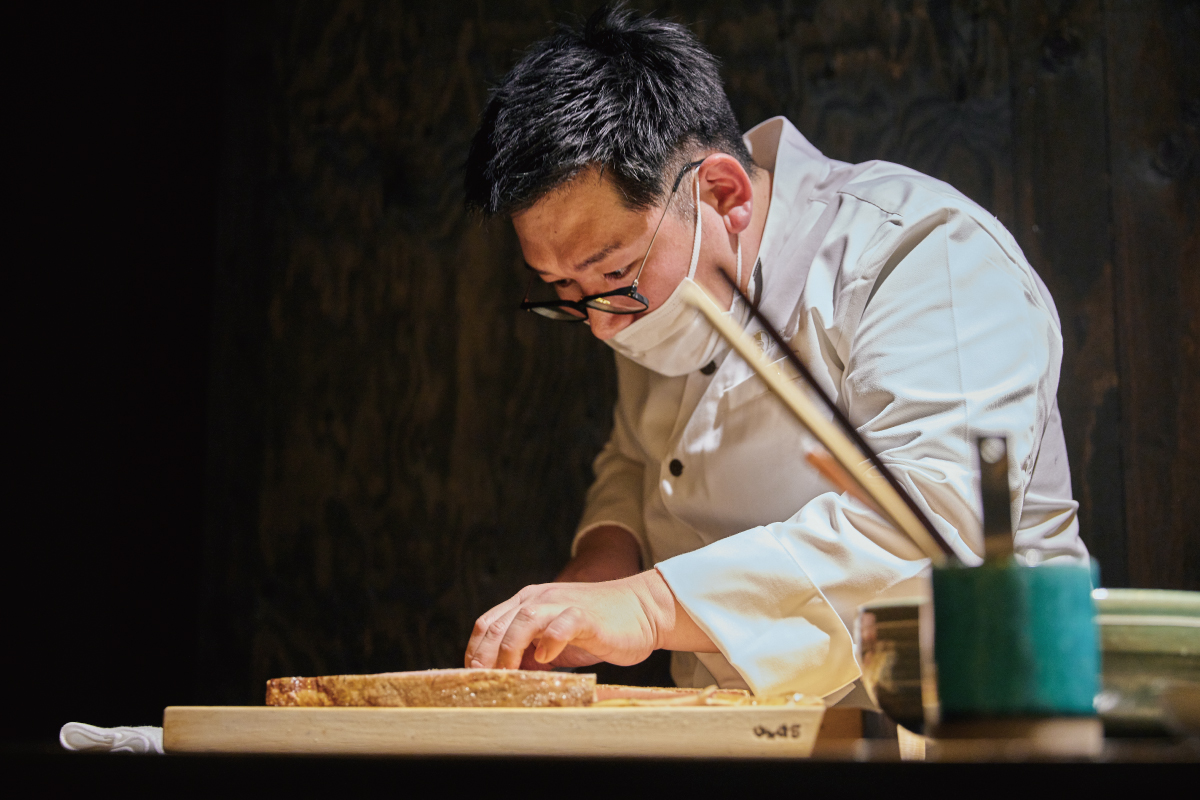
Chef Kawashima gave a presentation on the straw-grilled yellowtail used for the third dish, Yellowtail & Daikon Radish. There was a brief commotion in the hall as the guests left their seats to take pictures and videos of the event.
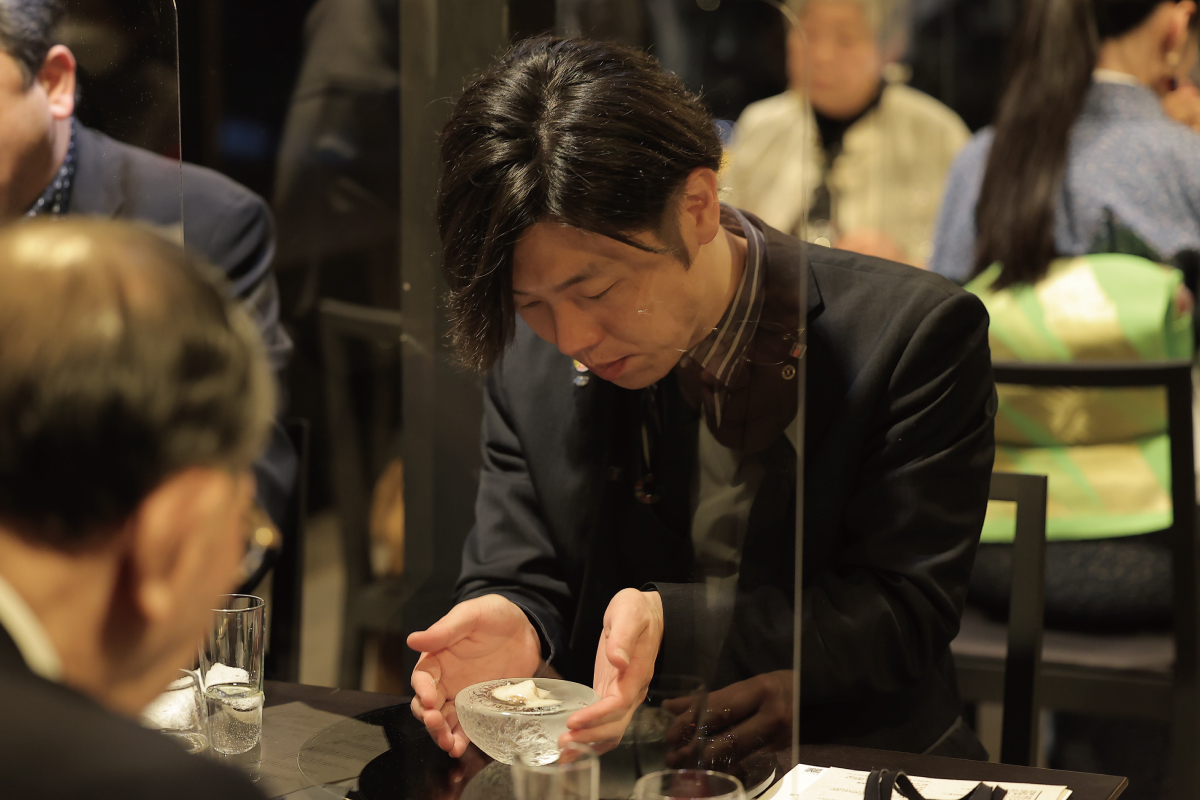
By the time the fourth dish of steamed food was brought out, I looked out the window and noticed that the sun had set completely, and an illuminated Kanazawa Castle emerged. As the course progressed, people started to become more comfortable with the others around them, and the venue became filled with a friendly atmosphere.
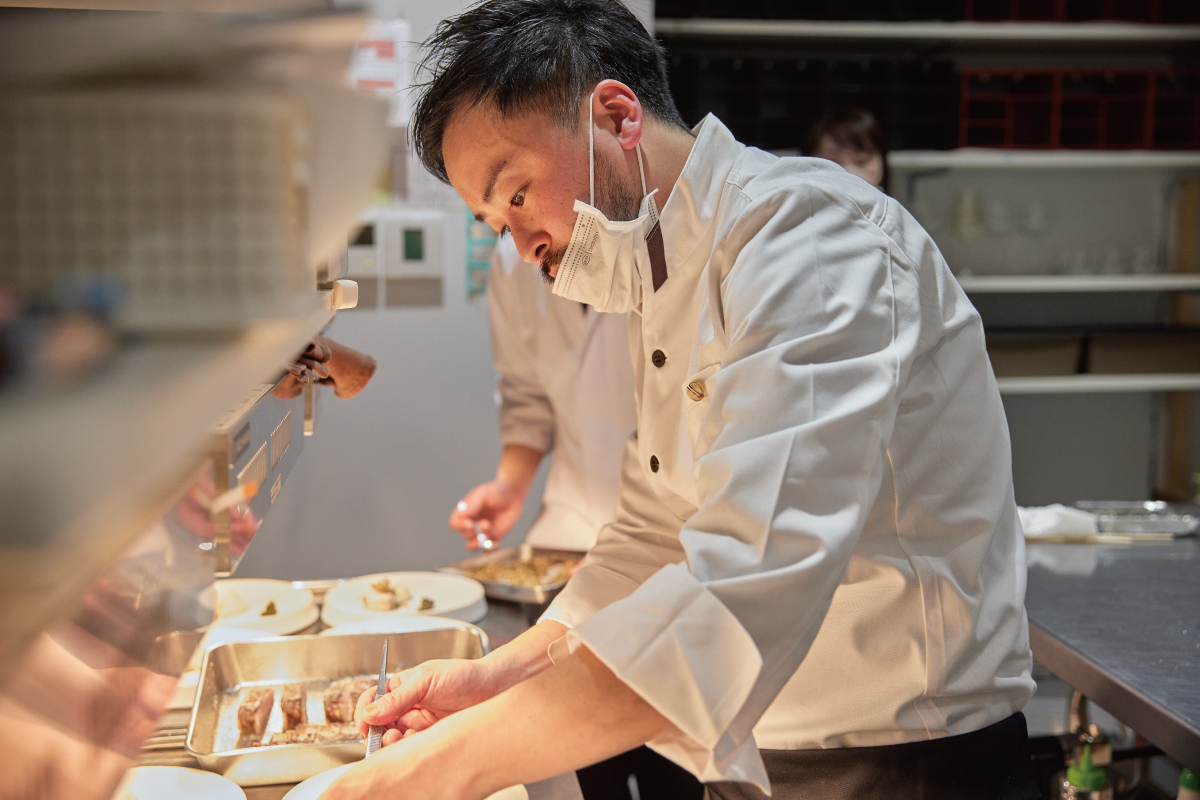
Chef Hirata’s fifth dish was a mind-boggling fusion of Noto culture and Italian cuisine. He specifically chose fragrant raw shiitake mushrooms and Spanish mackerel for this dish, and the guests were quite pleased by it. The sixth dish, Chef Sunayama’s Bear Hotpot, was also the result of a process of trial and error. As hot soup was poured into the bowls created by Mr. Akagi, some guests looked at it in amazement as they realized that the dish had been transformed into sophisticated wild game cuisine.
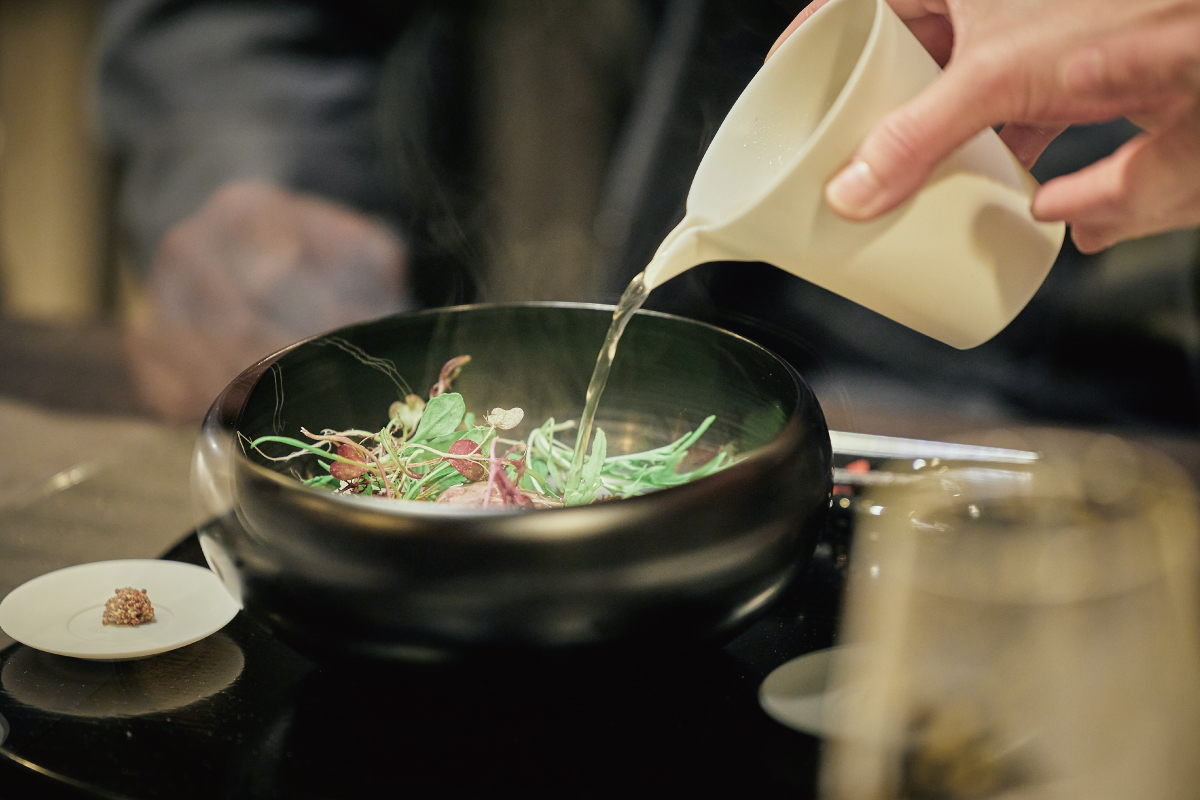
For the seventh dish, chefs Kawashima and Hamada emerged from the kitchen with a kettle of freshly cooked rice. Steam rose up in the air as they went from table to table opening the lid on the kettle. After making a round in the auditorium, they made their way to the stage. A “crab tower” more than 20 centimeters high, made of crab meat, was prepared on the table, causing a stir throughout the venue. “There’s more crab than rice!” “I can’t see the rice for all the crab!” The atmosphere resembled a press conference for a popular celebrity, with the guests brandishing their smartphones to take photos of the two of them as they boldly mixed the crab into the rice in front of the crowd.
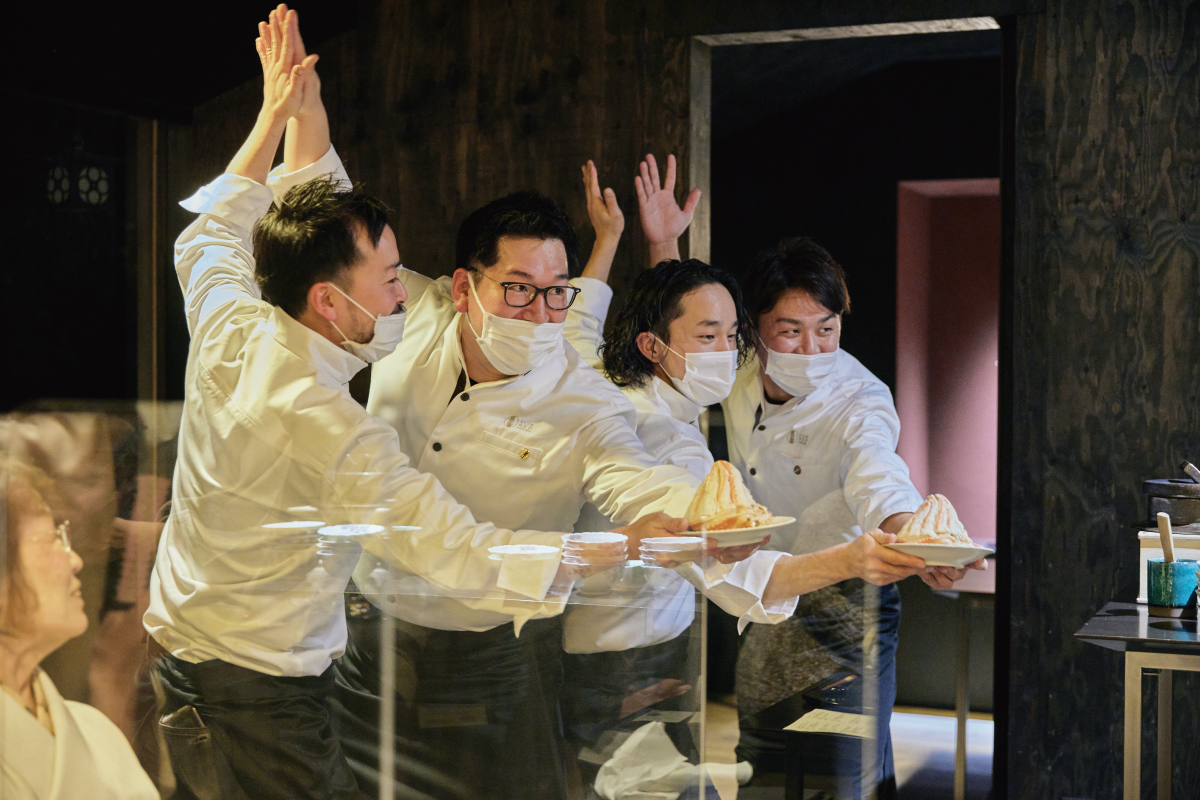
After the crab rice had been served, the guests, who had at first shown reservation when being told that additional helpings were available, started to ask for a second bowl one after another. After they emptied their bowls, they contentedly put down their chopsticks.
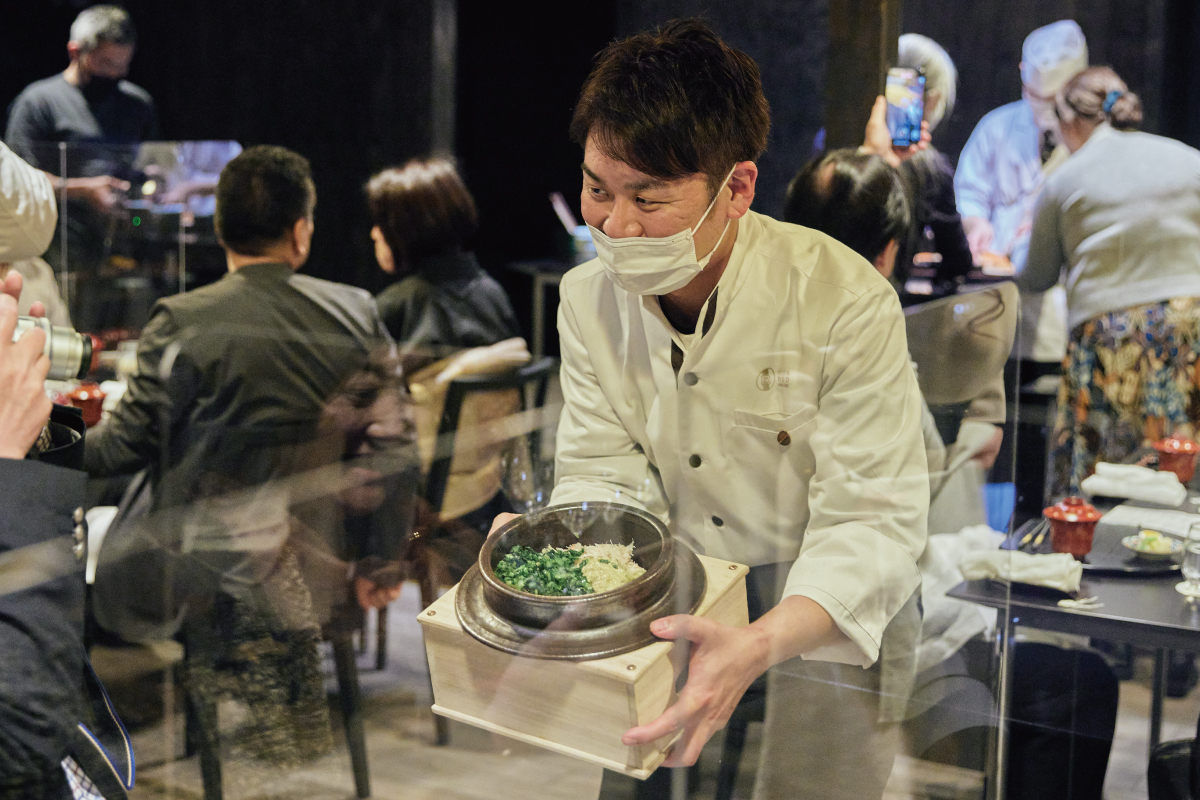
After the guests finished eating the last of the dessert, the final course of the evening, Chef Kawashima began to make matcha green tea for them. The multi-course meal that spanned two and a half hours came to an end as the guests sipped their tea with satisfaction.
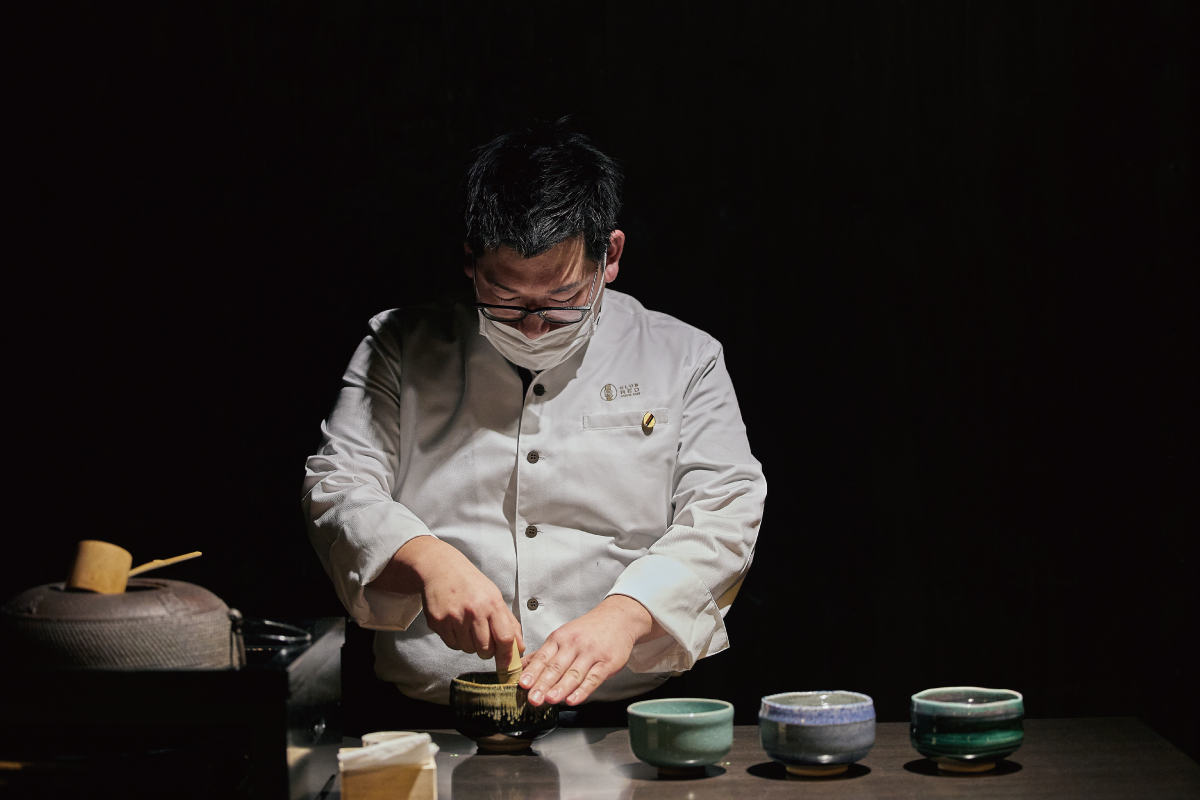
Finally, Chef Kawashima introduced the chefs who participated and the young staff who were involved in cooking and serving in their respective teams, and also said a few words to the audience.
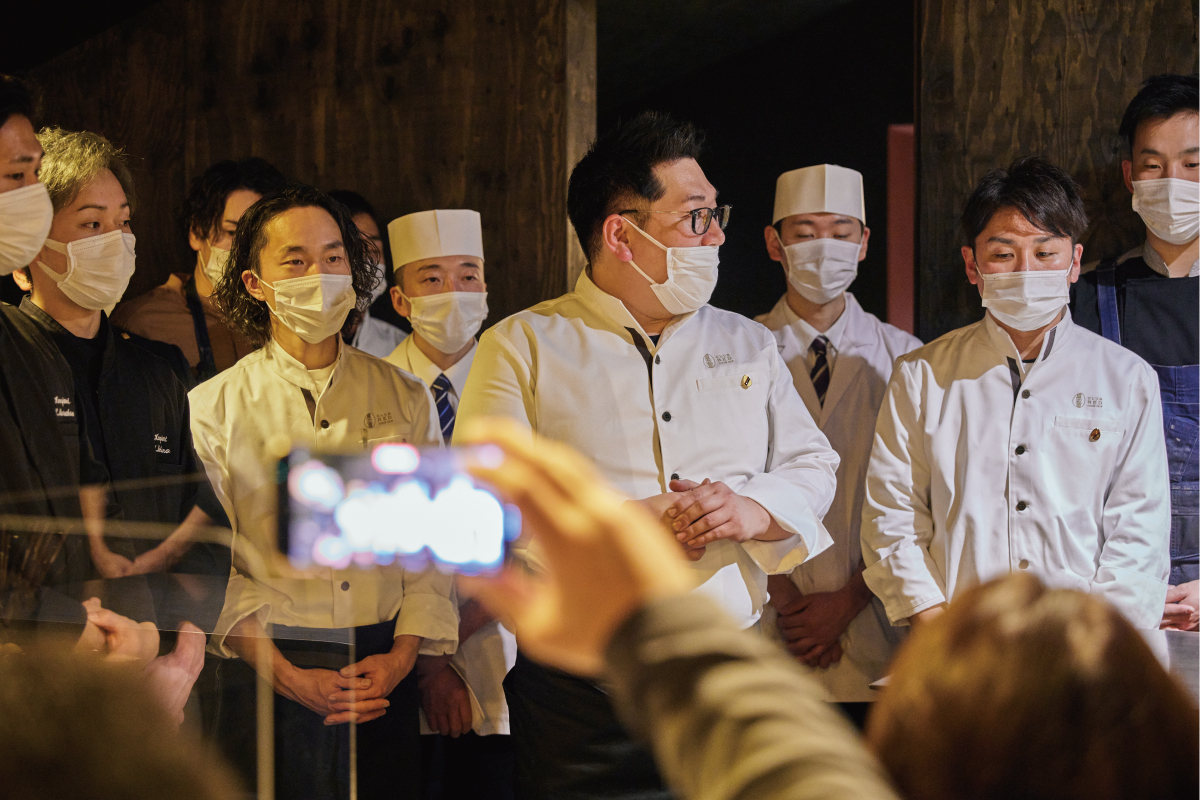
“I’m really happy and moved to see this day after a whole year of effort. Of course, we couldn’t have done it without our customers, but we also couldn’t have done it without the help of Japan Cultural Expo and CLUB RED, who gave us this opportunity.
I’m sure that you got an idea of the wonderful cuisine that Hokuriku has to offer, but above all, it’s the people that are truly great. The fact that there are so many young people like us makes me feel that we must nurture the next generation within the communities, and not let this end with our generation. We will continue to do our best moving forward, carrying the hopes of many people on our shoulders, so I would like to ask for your support.
And, last but not least, I would like to thank everyone at Kenjotei for allowing us to use this venue. Thank you very much.”
After the announcement of the end of the event was made, all the chefs and staff lined up on the first floor to greet each guest with a smile and see them off. And with that, the “Japan Cultural Expo x CLUB RED: Traveling Japan by Dining in Hokuriku” dining event came to a close.
In the next report, we will take an in-depth look at the individual dishes that the chefs spent a year working together to prepare.
*This event was held with all possible infection control measures in place for staff and visitors.
Message from Ambassador Fumiko Kono (Food Producer & RED U-35 Judge)
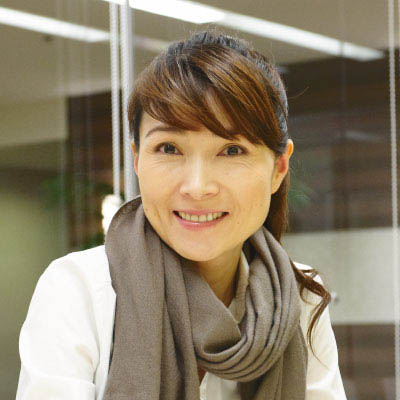
Due to the spread of COVID-19, Ms. Kono was unable to attend in person, but a message from her was read out at the opening of the event.
“This year’s event was led by CLUB RED members Tohru Kawashima, Toshiharu Sunayama, Yuta Hamada, and Meiju Hirata, all of whom have ties to Hokuriku.
The four of them have different specialties, different ideas about cooking, and each of them has their own personal culinary philosophy. But when these four people came together as a team, they created a unique and wonderful multi-course meal that was incredibly rich, unique, intelligent, and loving.
They have spent about a year working on this event, and during that time have learned not only about Hokuriku’s local cuisine, but also about its customs and traditional crafts. So then, the question is, how do they create something using all they have taken in?
Together, they have been thinking about what chefs can contribute to society, anguishing over it, and accumulating measures. And, up until the end of this very day, they have been trying to figure out what they can do to make everyone as happy as possible and to make the food taste its best.
Rebuilding and passing on the wonderful culture of Hokuriku is by no means an easy task, but I was impressed by how this team, even while worrying about and pondering things, enjoyed working on it more than anything else.
Our hope is that you will enjoy the results of their hard work to your heart's content.”
Japan Cultural Expo x CLUB RED: Traveling Japan by Dining in Hokuriku
Sponsors: Agency for Cultural Affairs, Japan Arts Council, NKB Inc.
Planning & Management: RED U-35 (RYORIN’s EMERGING DREAM U-35) Executive Committee, Gurunavi, Inc.
Support: Ishikawa Prefecture, Toyama Prefecture, Kanazawa City, Uozu City, Nanao City
“Japan Cultural Expo x CLUB RED: Traveling Japan by Dining in Hokuriku” was held as part of the Japan Cultural Expo, an experience-based program of exhibitions and stage performances organized by the Agency for Cultural Affairs and the Japan Arts Council.
*Japan Cultural Expo is a year-round art project that includes art exhibitions, performing arts performances, and art festivals throughout Japan, under the collective theme of “The Japanese People and Nature”, allowing people to experience the beauty of Japan from the Jomon period to the present day. The Agency for Cultural Affairs, Japan Arts Council, relevant government ministries and agencies, cultural facilities across Japan, local governments, private companies and organizations, and others work together to promote the various arts and cultures that each region is proud of, with the aim of creating a better future by transmitting their diverse and universal appeal to Japan and abroad, and passing them on to future generations.
Japan Cultural Expo Official Website: https://japanculturalexpo.bunka.go.jp
https://www.bunka.go.jp/
https://www.ntj.jac.go.jp/english.html